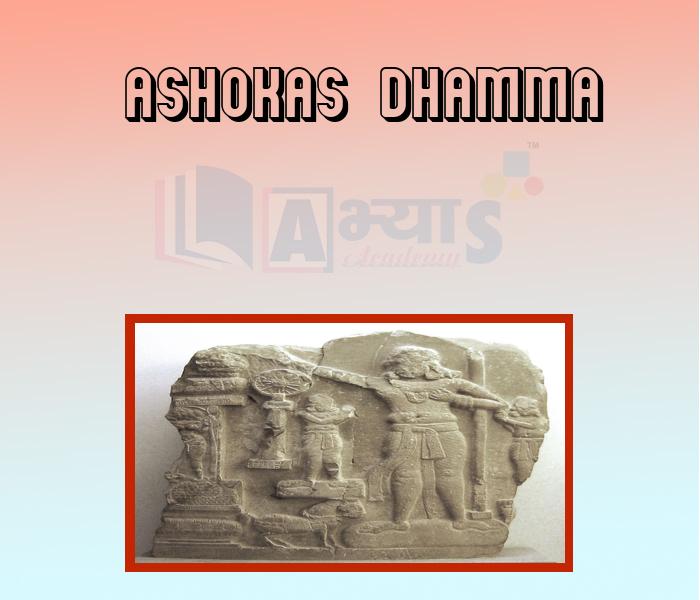Ashokas Dhamma










Ashoka's Dhamma
For the moral unit of his subjects, the code of conduct (rules) which Ashoka presented is called Dhamma in his inscriptions This definition is derived from Rahulovaduta. In the second and Seventh Inscriptions, he explains the meaning of Dhamma and says that retirement from sun, world welfare, mercy, truthfulness, purity, softness and saintliness are Dhamma.
Measures Taken by Ashoka to Promote Dhamma
(i) Beginning of Dhamma Yatras - During these pilgrimages many activities took place like visiting the brahmins and Shramans and making gifts to them, meeting the aged and making provisions of money for them, and contacting the people of the countryside. The visit of Bodh Gaya in the tenth year of the reign was Ashoka's first Dhamma Yatra
For the moral unit of his subjects, the code of conduct (rules) which Ashoka presented is called Dhamma.The definition is derived from ________________. | |||
| Right Option : C | |||
| View Explanation | |||
Dharmamahamatras were __________ during the Mauryans | |||
| Right Option : A | |||
| View Explanation | |||
According to the ____________ Rock Edict, Ashoka sent many preachers in the country | |||
| Right Option : B | |||
| View Explanation | |||
Students / Parents Reviews [10]
It was a good experience with Abhyas Academy. I even faced problems in starting but slowly and steadily overcomed. Especially reasoning classes helped me a lot.

Cheshta
10thMy experience with Abhyas is very good. I have learnt many things here like vedic maths and reasoning also. Teachers here first take our doubts and then there are assignments to verify our weak points.

Shivam Rana
7thMy experience was very good with Abhyas academy. I am studying here from 6th class and I am satisfied by its results in my life. I improved a lot here ahead of school syllabus.

Ayan Ghosh
8thOne of the best institutes to develope a child interest in studies.Provides SST and English knowledge also unlike other institutes. Teachers are co operative and friendly online tests andPPT develope practical knowledge also.

Aman Kumar Shrivastava
10thAbhyas Methodology is very good. It is based on according to student and each child manages accordingly to its properly. Methodology has improved the abilities of students to shine them in future.

Manish Kumar
10thAbout Abhyas metholodology the teachers are very nice and hardworking toward students.The Centre Head Mrs Anu Sethi is also a brilliant teacher.Abhyas has taught me how to overcome problems and has always taken my doubts and suppoeted me.

Shreya Shrivastava
8thAbhyas is a complete education Institute. Here extreme care is taken by teacher with the help of regular exam. Extra classes also conducted by the institute, if the student is weak.

Om Umang
10thBeing a parent, I saw my daughter improvement in her studies by seeing a good result in all day to day compititive exam TMO, NSO, IEO etc and as well as studies. I have got a fruitful result from my daughter.

Prisha Gupta
8thIt was good as the experience because as we had come here we had been improved in a such envirnment created here.Extra is taught which is beneficial for future.

Eshan Arora
8thIt has a great methodology. Students here can get analysis to their test quickly.We can learn easily through PPTs and the testing methods are good. We know that where we have to practice
